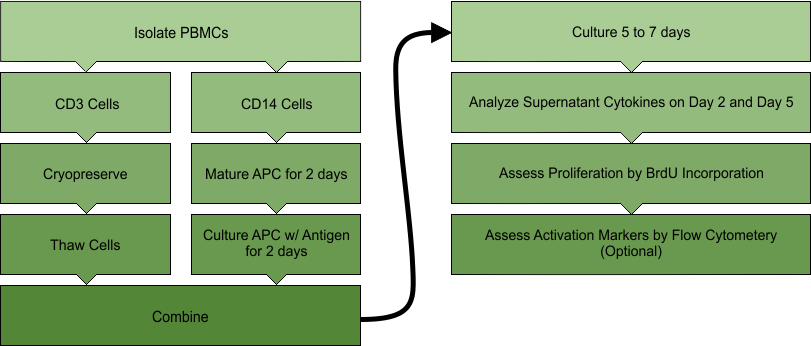Allergic contact dermatitis (ACD) is a delayed hypersensitivity response that is one of the most prevalent types of hypersensitivity reactions experienced by humans, especially in terms of allergy to metals. Key to the underlying biology responsible for this adverse skin reaction is the activation of allergen-specific T-lymphocytes. Metals and other chemicals can stimulate T-cells directly via drug specific receptors or, most generally, by a mechanism that is dependent upon antigen presenting dentritic cells. Allergen specific, reactive T-cells clones expand by proliferating and produce pro-inflammatory cytokines. The relative degree of immune reactivity, or activation, can be measured experimentally ex vivo by use of the lymphocyte transformation test (LTT).
Nyfeler and Pichler (1997) and Popple and coworkers (2016) defined the LTT as an experimental recall assay in which allergen-reactive memory T-lymphocytes obtained from the peripheral blood of sensitized (allergic) individuals are re-stimulated in vitro with relevant allergen to provoke a specific response. The basic assay design is outlined below:

Gerber BO and Pichler WJ (2004). Cellular mechanisms of T cell mediated drug hypersensitivity. Curr Opin Immunol 16:732-737. PMID:15511665
Pichler WJ and Tilch J (2004). The lymphocyte transformation test in the diagnosis of drug hypersensitivity. Allergy 59:809-820. PMID: 15230812
Kano Y, Hirahara K, Mitsuyama Y, Takahashi R and Shiohara T (2007). Utility of the lymphocyte transformation test in the diagnosis of drug sensitivity: dependence on its timing and the type of drug eruption. Allergy 62:1439-1444. PMID:17983378
Popple A, Williams J, Maxwell G, Gellatly N, Dearman RJ and Kimber I (2016). The lymphocyte transformation test in allergic contact dermatitis: new opportunities. J Immunotoxicol 13(1): 84-91. PMID:25655136
Copyright © 2021. All rights reserved.